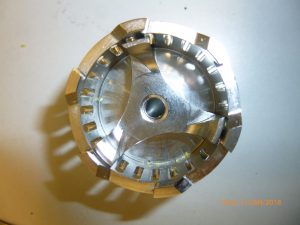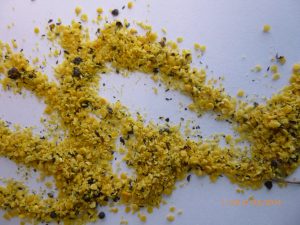Rapeseed processing in Europe currently takes place in conventional oil mills and consists of pressing and post-extraction of the press cake with hexane to increase the oil yield. Rapeseed oil is the most valuable product. The technologies optimized in recent decades thus enable maximum yields. The rapeseed extraction meal or rapeseed press cake is marketed as a by-product as conventional animal feed. Bioactive and valuable ingredients contained in rapeseed, such as sinapine, phytic acid and tocopherol, are not used because they cannot be obtained mildly using the conventional method. On this basis, there is hardly any potential to increase the value added in conventional oil mills. The technological development of rapeseed dehulling in recent years, however, has created the basis for minimizing the proportion of antinutritive compounds and fiber constituents in the rapeseed kernels, so that the quality of the oil and the rapeseed meal can be improved and, in the end, a higher-quality rapeseed kernel concentrate can be launched on the market.
Cell disruption and direct extraction in the new process
In addition to pressing the seed, conventional extraction is carried out by solvent extraction with hexane. The presence of crude fiber and dietary fiber is essential for the use of pressing processes. These are necessary for the product transport and maintenance of the pressure in the press. If, however, peeled seeds (i.e. with reduced fiber content) are processed, the use of pressing processes is not possible. In this case, oil extraction must be carried out exclusively by solvent extraction, so-called direct extraction.
In conventional processes for extraction with hydrocarbons, such as hexane, unwanted by-products are also extracted, which increases the cost of oil refining. On the other hand, the hydrocarbons used so far are not suitable for extracting specific valuable ingredients from the seed.
By peeling rapeseed before further processing, the proportion of antinutritive substances and fiber components can be minimized, so that the quality of the products can be increased. Conventional pressing methods used in conventional oil mills cannot be applied to peeled rapeseed with a correspondingly low residual shell content, as the fiber content in the material to be processed is too low.

In contrast, alcohols can be used to eliminate antinutritive substances from rapeseed. In addition, it is possible to use alcohols to extract oil from rapeseed while simultaneously eliminating the antinutritive substances in a single process step. The most suitable alcohols were methanol, ethanol and isopropanol. In contrast to ethanol and isopropanol, a large-scale application of methanol could not rule out damage to health, making it unsuitable as a solvent in oilseed processing. In comparison, isopropanol shows a better oil solubility, which is still favourable even with a relatively high water content (10–15 %). Ethanol, however, has the decisive property for rapeseed processing of better solubility for the antinutritive substances and other valuable plant constituents.

According to the current state of the art, the process for peeling rapeseed consists of the steps of breaking up the seed and subsequently separating the shells from the rapeseed cores in air streams. Industrial plants for peeling rapeseed will have capacities of up to 1,000 t/d and higher. This means that there is an obvious need for development for industrial implementation. The aim must be to use the results already achieved on a small scale to develop a continuous process with the appropriate plant technology, which will have a capacity of about one ton per day in the pilot plant and higher. This performance class permits product handling and is also scalable in order to obtain the necessary knowledge for the design of a plant that is viable in practice.
